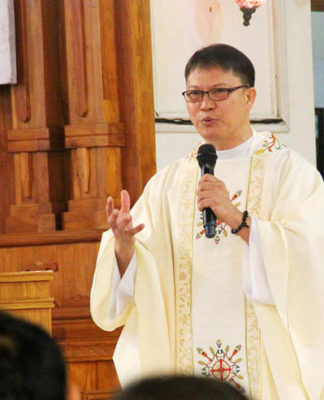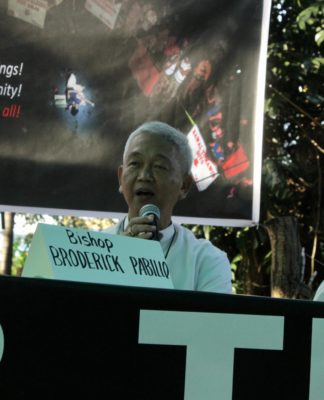 CHURCH groups and art aficionados alike have been left bereaved over the death of religious painter Joey Velasco after a five-year struggle with kidney cancer.
CHURCH groups and art aficionados alike have been left bereaved over the death of religious painter Joey Velasco after a five-year struggle with kidney cancer.
The businessman-painter succumbed to heart attack and seizures due to his kidney ailment at the age of 43 last July 20.
Velasco, best known for his religious and humanitarian paintings, made the famous “Hapag ng Pag-asa”, which recreates the Last Supper by depicting Christ breaking the bread with street children. He painted children suffering from poverty, elderly who have been abandoned, and people suffering from Down syndrome and cancer.
Marie Puno-Sunga, widow of Velasco, remembered Velasco as a painter who gave his heart and soul to his paintings.
“My husband paints to show the full expression of his soul. He lives by his paintings,” she said. “If he wants to express something, he puts it into his paintings.”
Velasco had been already diagnosed with a serious kidney ailment in 2005, which made him wallow in depression. He isolated himself from people around him after he lost his left kidney in a major operation.
But Velasco treated his gift of painting as a way by which God called him to serve the needy. This epiphany urged Velasco to devote his life to people in need of love and support.
His first paintings, “Hapag ng Pag-asa” and “Kambas ng Lipunan”, won him the Catholic Mass Media Award in 2006 and 2007, respectively.
But it was the Hapag that placed his name on the art map.
Sunga told the Varsitarian that Velasco never had any formal training in painting until he became sick three years ago.
“His talent spurted because of inspiration from the Holy Spirit. He became God’s instrument to spread His word. He is just the [paint] brush of the Lord,” Velasco’s widow said.
“He was not the perfect husband but he was very loving,” she said. “We complement each other and he brought out the best in me.”
Marco, his son, remembered him as a selfless father.
“He was a very loving and caring person. He sacrificed for us,” he said. “He told us life lessons and he shared all his experiences with us.”
Velasco had his fair share of involvement in film-making. His documentary titled “Kambas ng Lipunan”, a social commentary on poverty narrated by Velasco himself, was screened at the CineVita, a film festival held in the UST and sponsored by the Varsitarian on March 2008.
Reared by a religious-oriented family, Velasco entered the seminary at the Minor Seminary of Don Bosco, but he did not continue to the priesthood. He became a businessman, raised a family, but was active in Catholic charities. He worked with Gawad Kalinga, which provided housing to the street children who modeled for “Hapag ng Pag-asa”. Brylle B. Tabora













